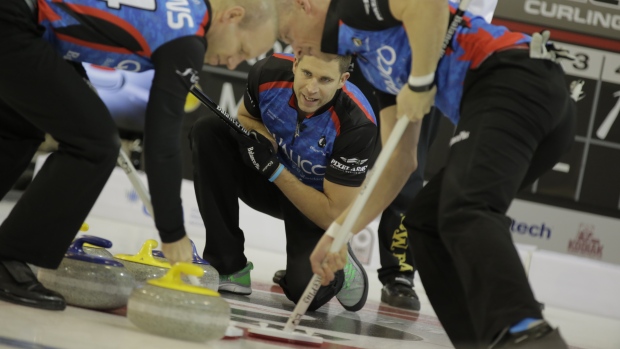Jan 6, 2016
Skins Game format broke the curling mould
When TSN first aired the curling Skins Game back in 1986, jaws dropped and heads shook from coast to coast. Thanks to a new rules format, the game suddenly broke from the yawning mould of the day, writes TSN's Bob Weeks.
By Bob Weeks

When TSN first aired the curling Skins Game back in 1986, jaws dropped and heads shook from coast to coast.
In the era before the free-guard zone, where winning scores in Brier and Scotties games were often 3-2 with half the ends blanked, this was something new and amazing.
Every end, rocks were littered all over the house. Multi-stone raises, across-the-rings hit-and-rolls and draws through narrow ports were commonplace as fans and viewers looked on in disbelief at the shots made.
Thanks to a new rules format created by former TSN president Jim Thompson and curling entrepreneur Doug Maxwell, the game suddenly broke from the yawning mould of the day. No one had seen curling like this and the event became an annual showcase of how entertaining curling could become.
In fact, it’s easy to make the case that it was the Pinty’s All-Star Curling Skins Game that led to the creation of the free-guard zone, the rule that finally allowed curling to showcase the offensive side of the sport.
“I was a kid back then and I remember thinking that these guys were amazing,” said Brad Jacobs, who will defend his title in Banff, Alta., this weekend. “I couldn’t believe they were making the shots they were.”
“It was something you watched every year,” added Pat Simmons, who is also in the field along with Mike McEwen and Brad Gushue. “You’d see [Russ] Howard and [Wayne] Middaugh make these incredible shots. They seemed to be ahead of their time.”
While the format for Pinty’s Skins hasn’t changed, the rest of curling has caught up. These days, with the free-guard zone, those multiple-rock raises and big-weight takeouts that get rocks flying are more common. It’s rare to watch a game and not see a stunning shot that leaves viewers gasping.
But that doesn’t mean the Skins has lost any of its lustre, certainly not with the players.
“It definitely still has impact,” said Jennifer Jones, who joins Val Sweeting, Rachel Homan and Kelsey Rocque in the women’s field. “Every end is like the last end. There’s always so much to play for.”
“It’s an honour just to get invited,” said Simmons.
The main difference from regular curling is that Skins is still all about individual ends. Each one is its own game and that means each one is played as if it’s the final end. Win a skin – by taking two or more points or stealing – and you win cash. But if a skin isn’t won, then the money carries over and the pot builds.
“As you go along and things build it can get a little tense,” said Jones. “You definitely get more serious if there are a lot of carryovers heading into those last two ends.”
“As you see the money start to build up, you get a little more focused,” added Jacobs. “There are definitely some nerves there.”
And the money is significant. A Grand Slam event brings a payday of around $25,000. The winner of the Skins has gone home with as much as $100,000. That was the record haul for Kevin Martin’s rink back in 2004. Last year, Jacobs collected $65,500 from the men’s purse while Homan earned $52,000 for winning the women’s event.
In many cases, with the pot building and game on the line, it can come down to one shot, sometimes worth tens of thousands of dollars.
“You almost know it’s going to happen at some point on the weekend,” said Jacobs. “You want nothing more than it to be your team that’s holding the rock for that one big shot.”
Also different about the Skins is the entertainment component. The ice surface is exceptionally close to the stands and there is often interaction between players and spectators. Jones recalls one year polling the fans as two which shot should be played.
The curlers also know they are there to entertain. While the money is significant, there are no world ranking points, no Brier or Scotties berths on the line, so there is the opportunity to be a bit looser than a regular event.
With big bucks, great shot-making and stellar teams, 30 years after its inaugural run, the Pinty’s Skins Game should once again leave everyone amazed.

